Winchester Cathedral Learning Centre
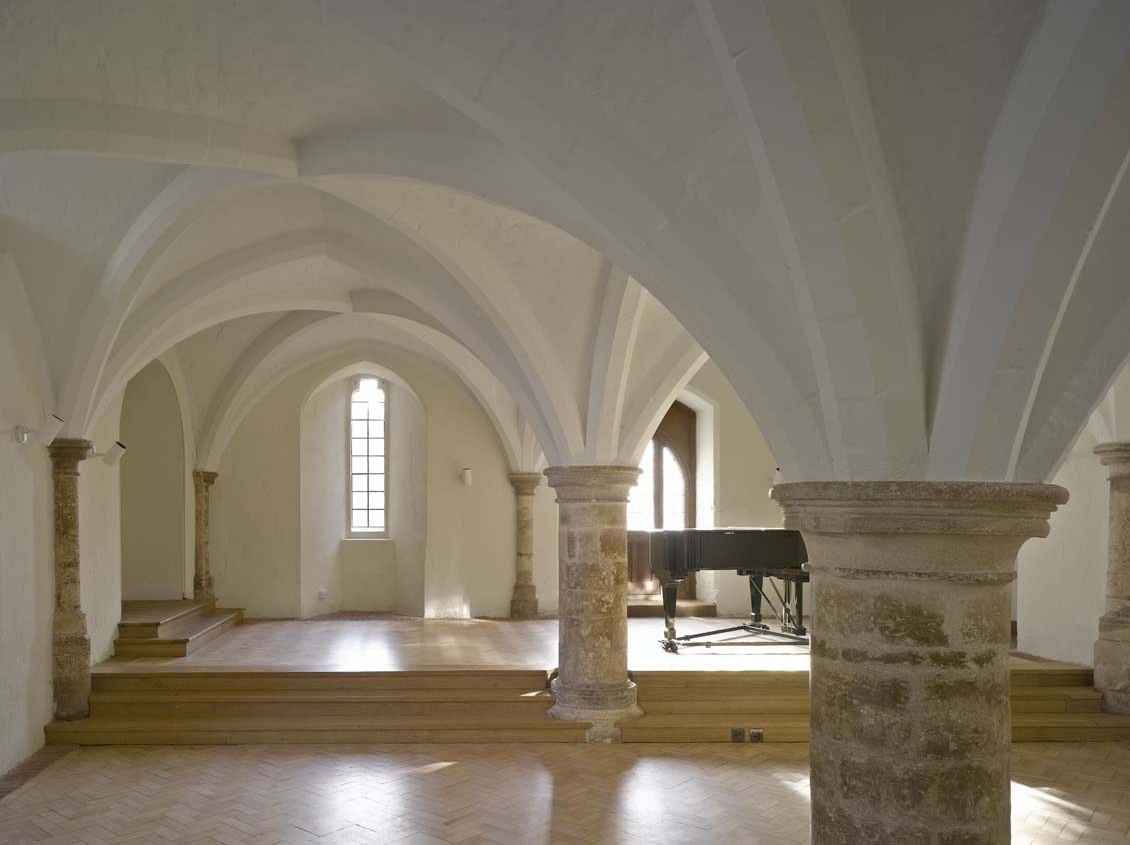
Bringing tradition and innovation together
Mann Williams worked with Hampshire County Council Architects to design a stainless steel and green oak framed tythe barn that would function as a learning centre. Bringing together traditional and innovative construction techniques, the new building sits comfortably within the ancient context of the Cathedral Close.
The simple lines of the finished building belie its engineering complexity. A number of 3D models were used both to develop the overall concept and then refine individual details such as the nodes of the tie rod lattice.
Project Lead

Project Team
- Value £1.95m
- Location Winchester
- Client Winchester Cathedral
- Completion 2016

Hidden support
The traditional exposed wooden pegs of a green oak frame are combined with all manner of hidden stainless-steel fixings, stiffeners and reinforcing plates. This invisible assistance adapts this time-honoured method of building for the modern form and the clean lines the building required.
A majestic view
Internally, a high-ceilinged auditorium space is formed using an expressed and beautifully engineered network of diagonally braced stainless-steel ties. A fully glazed façade offering views of the Cathedral is achieved by using a system for sway stiffness, hidden within the timber frame.
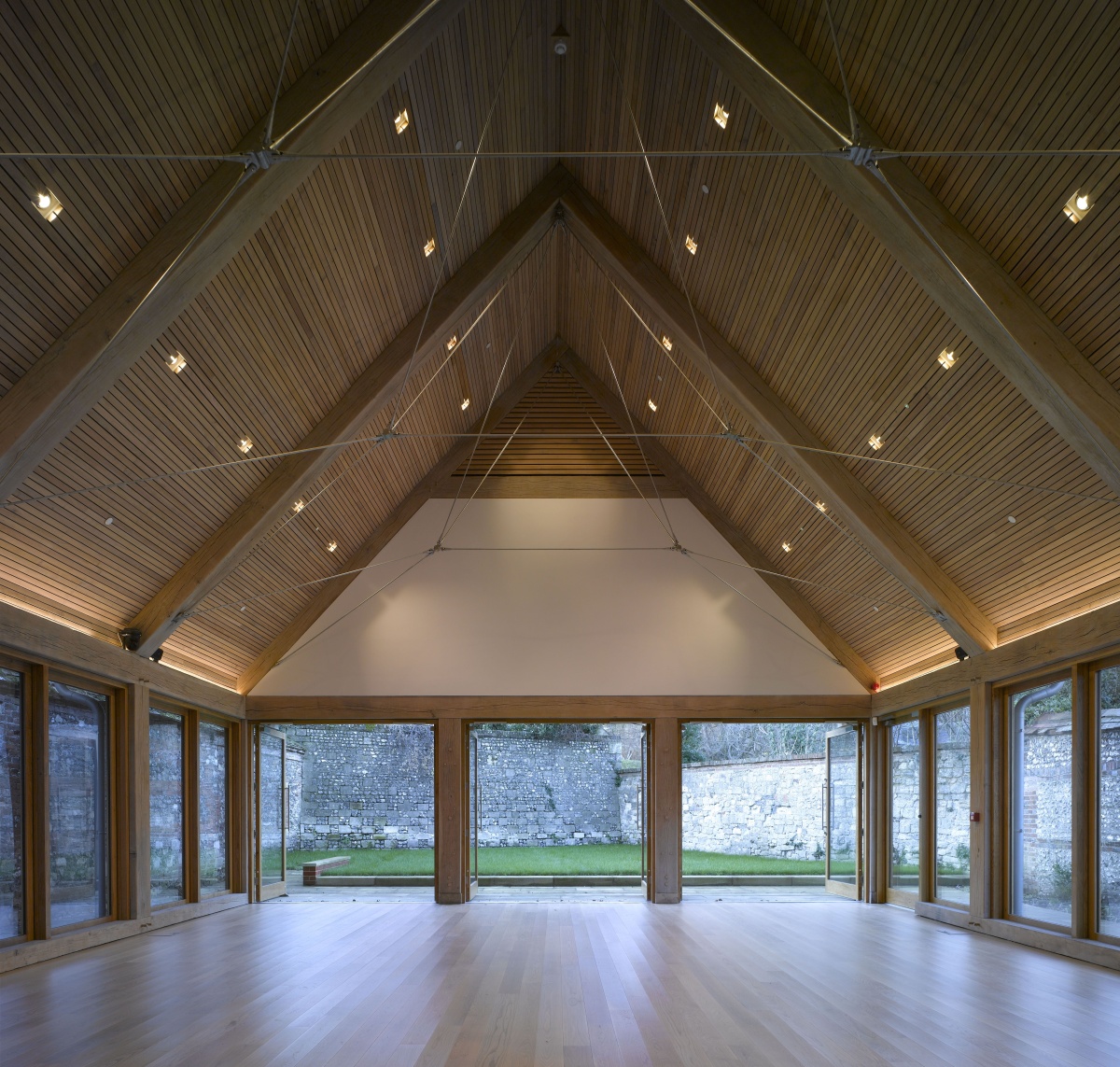

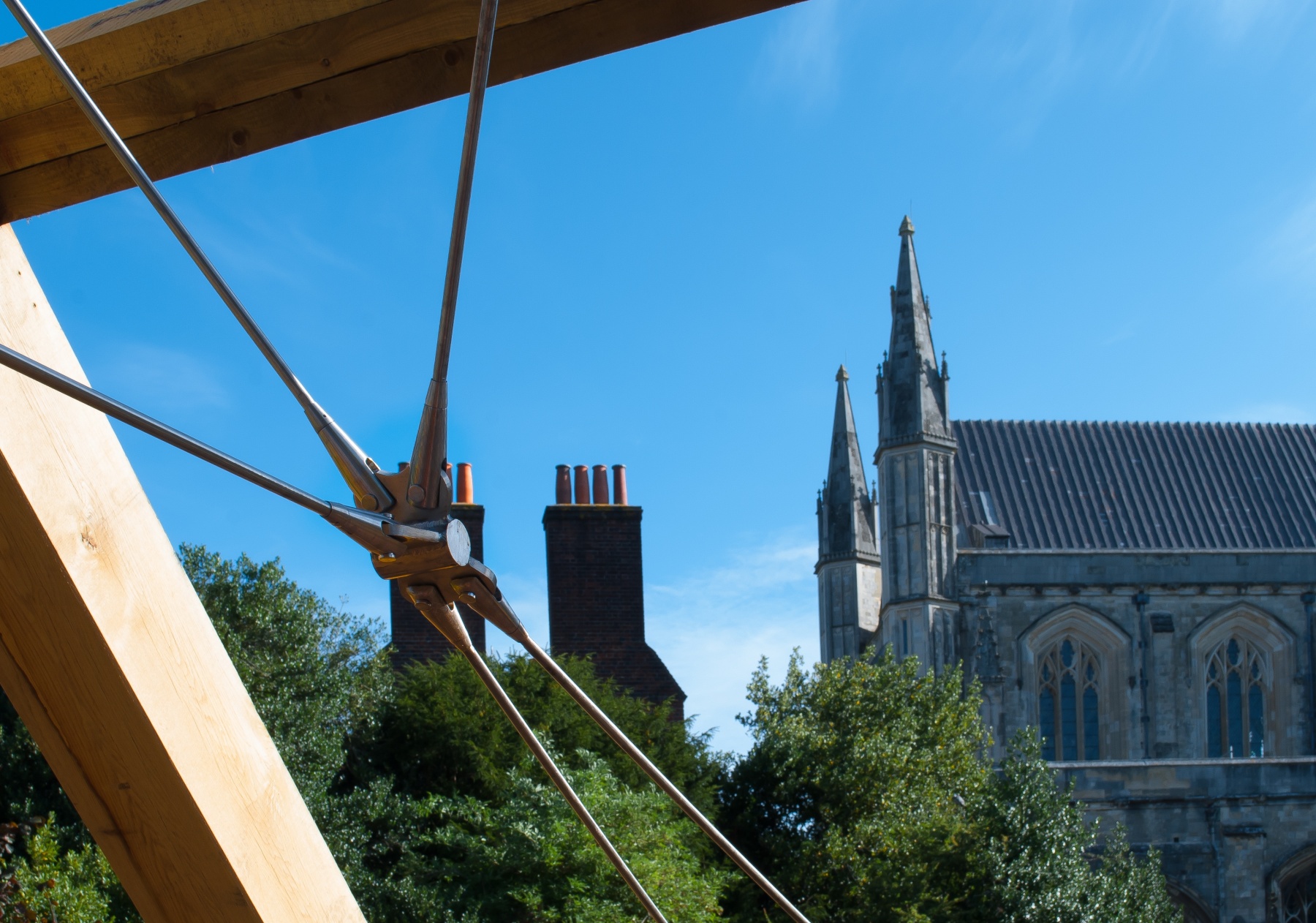

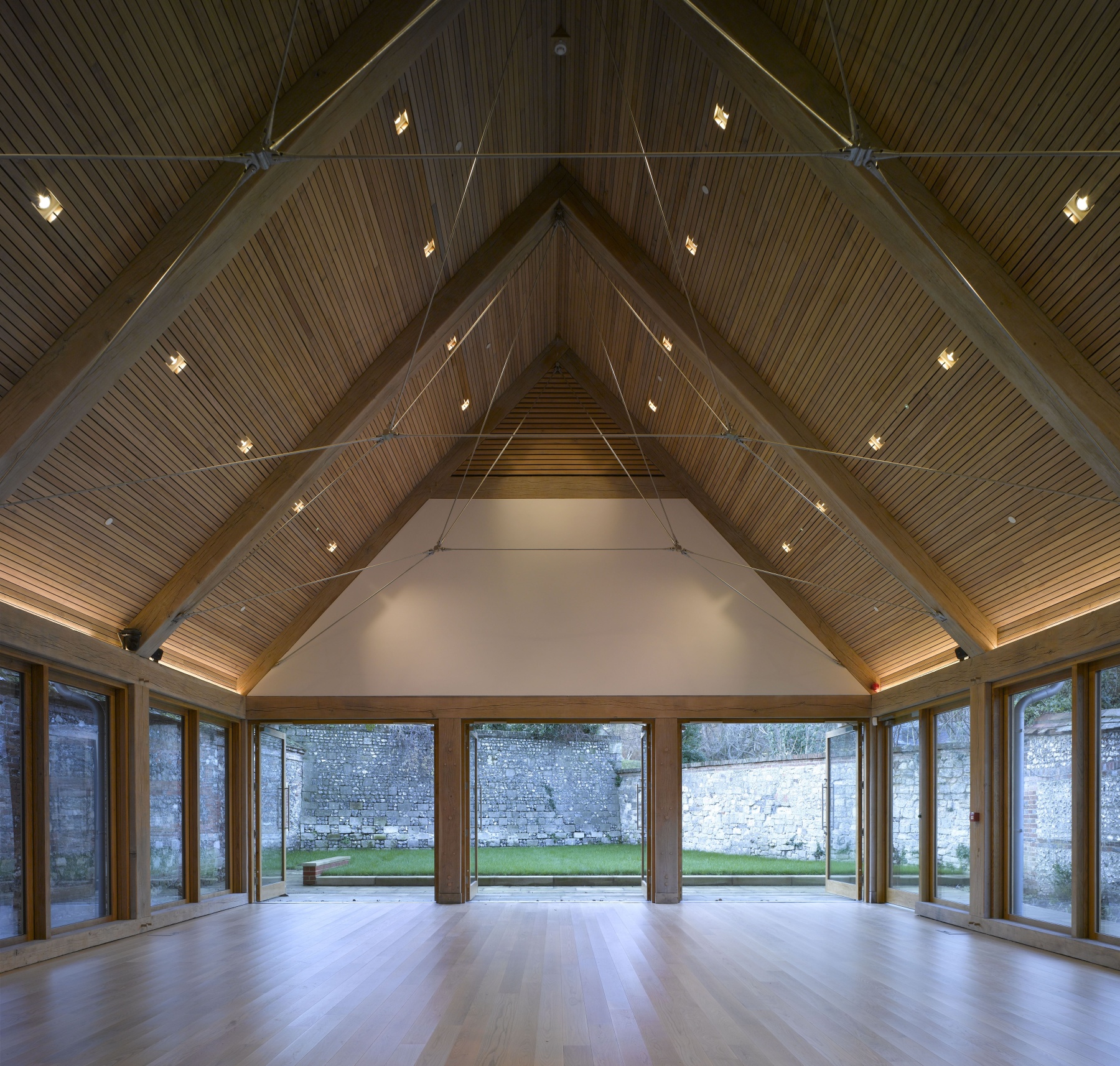
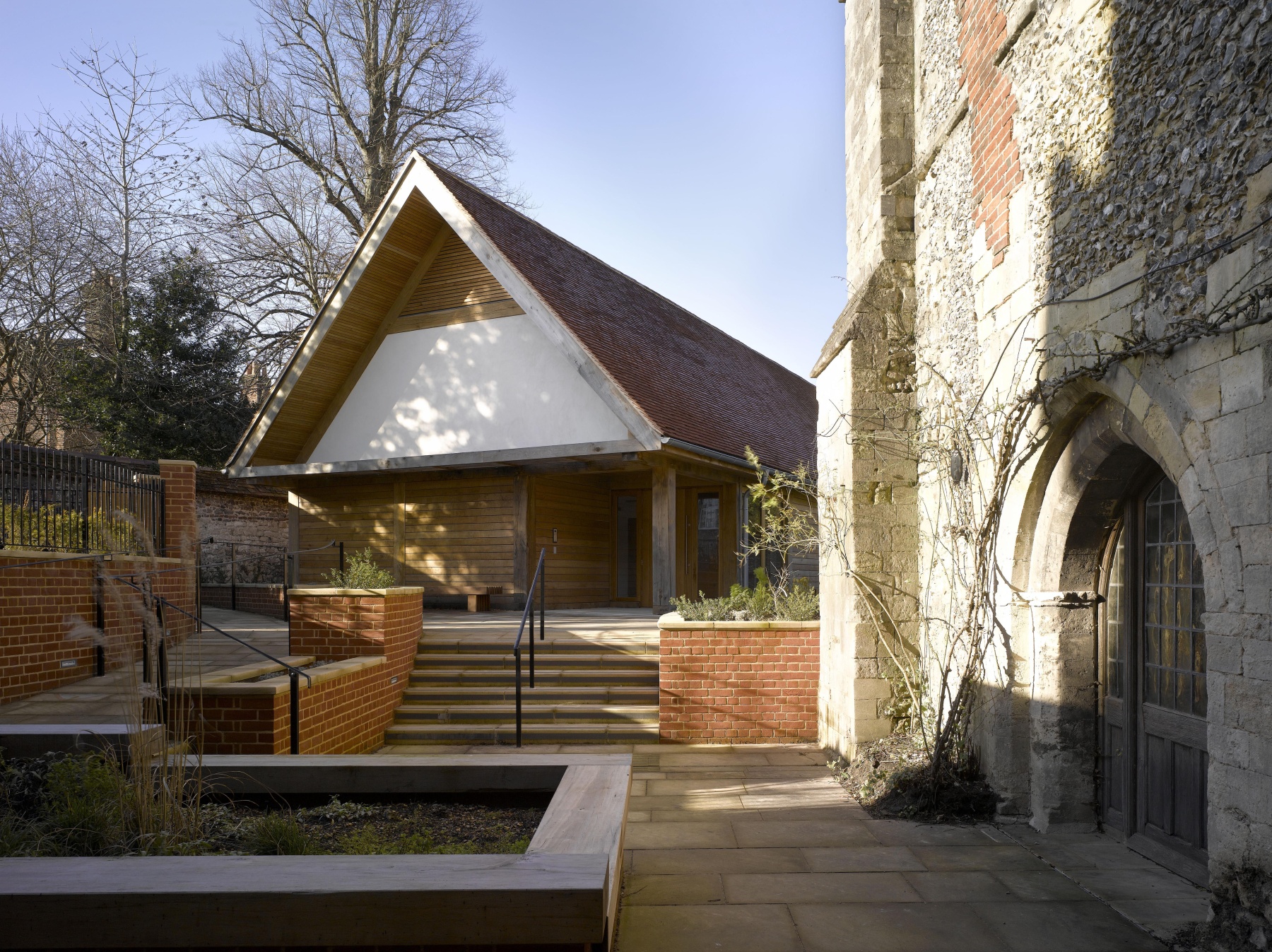
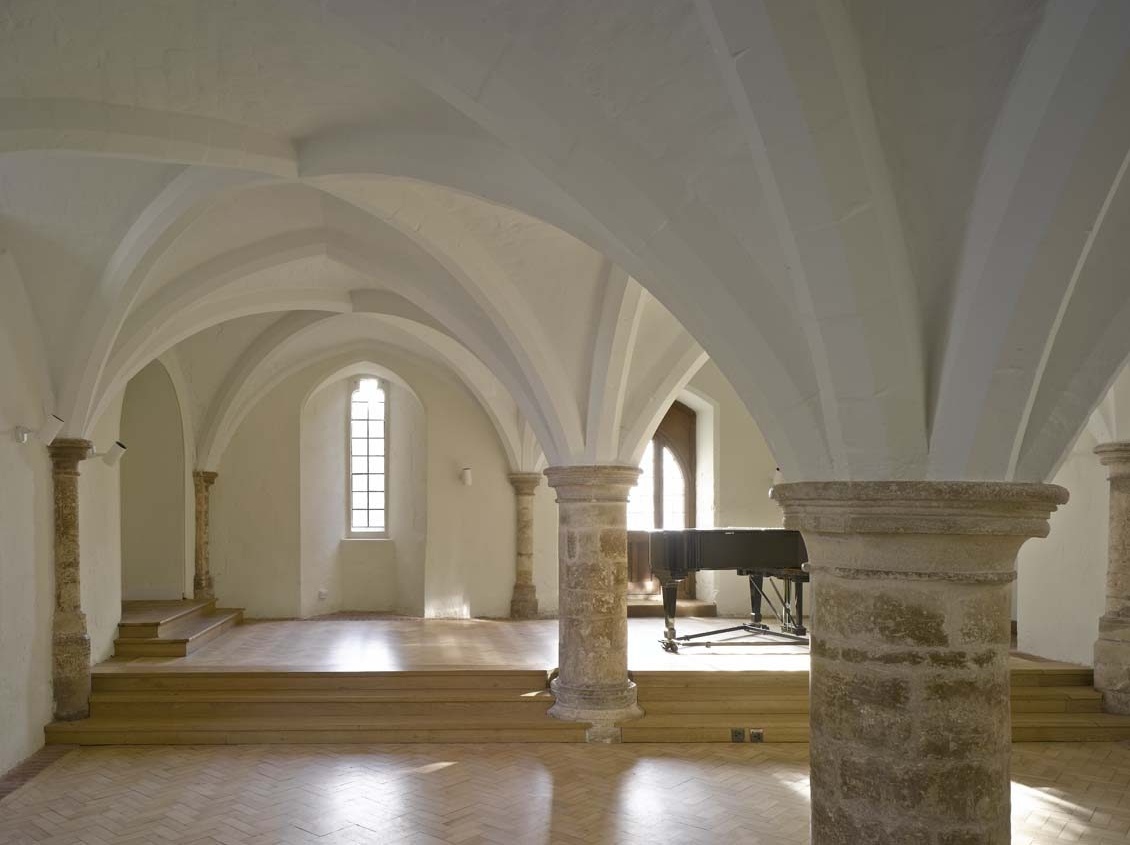
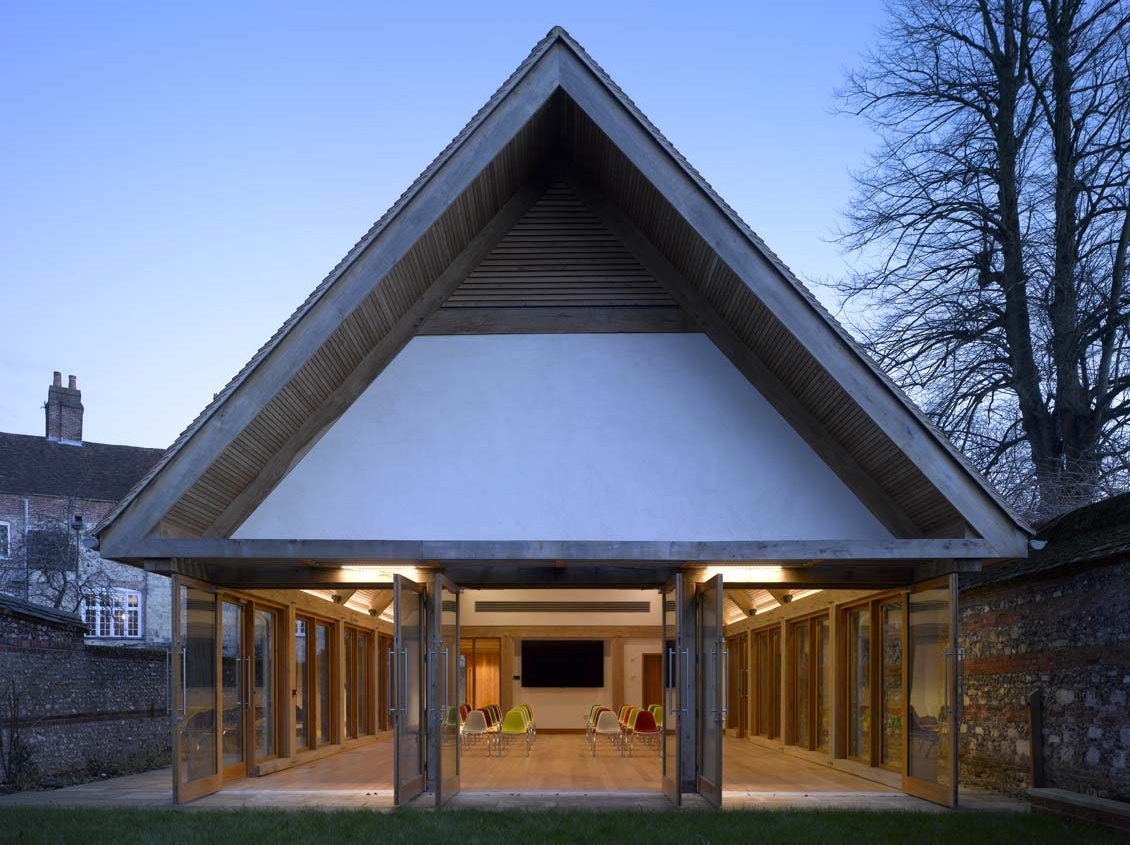
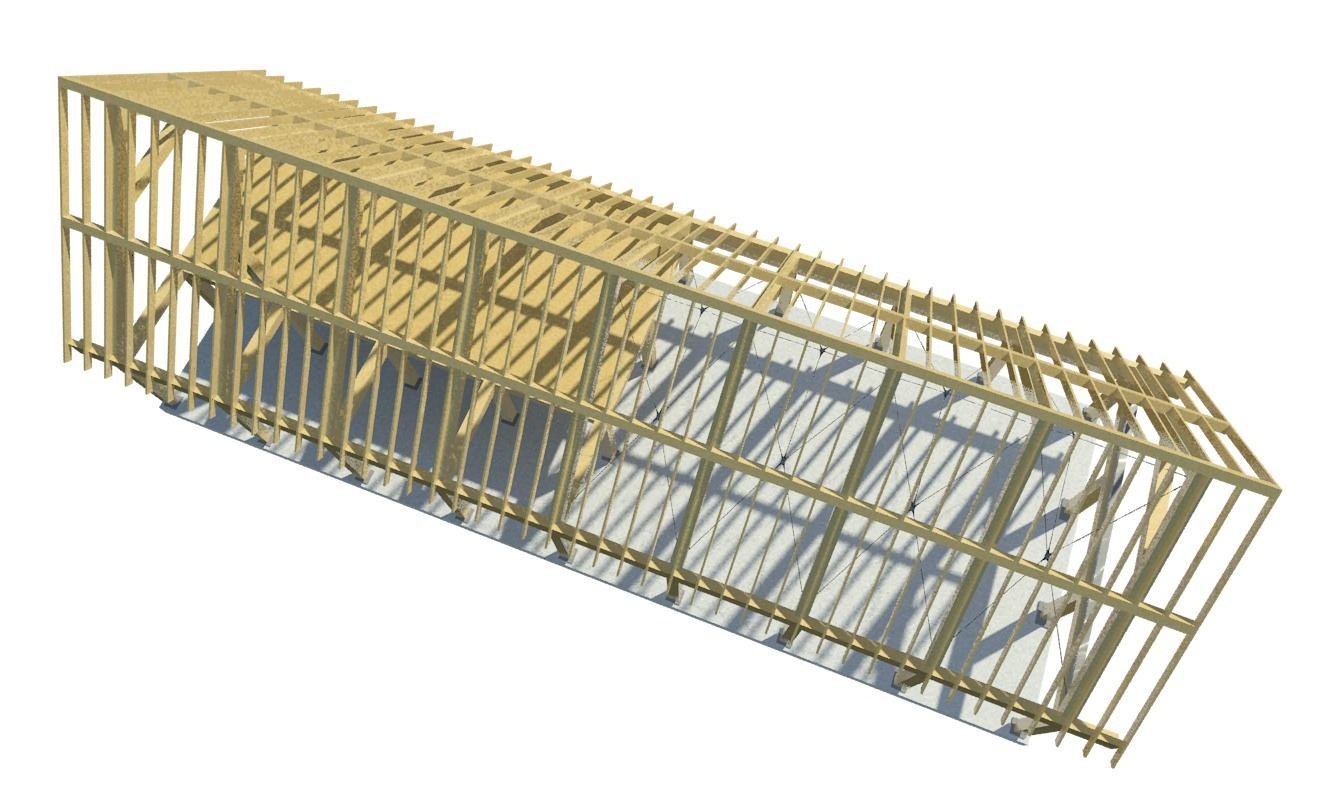
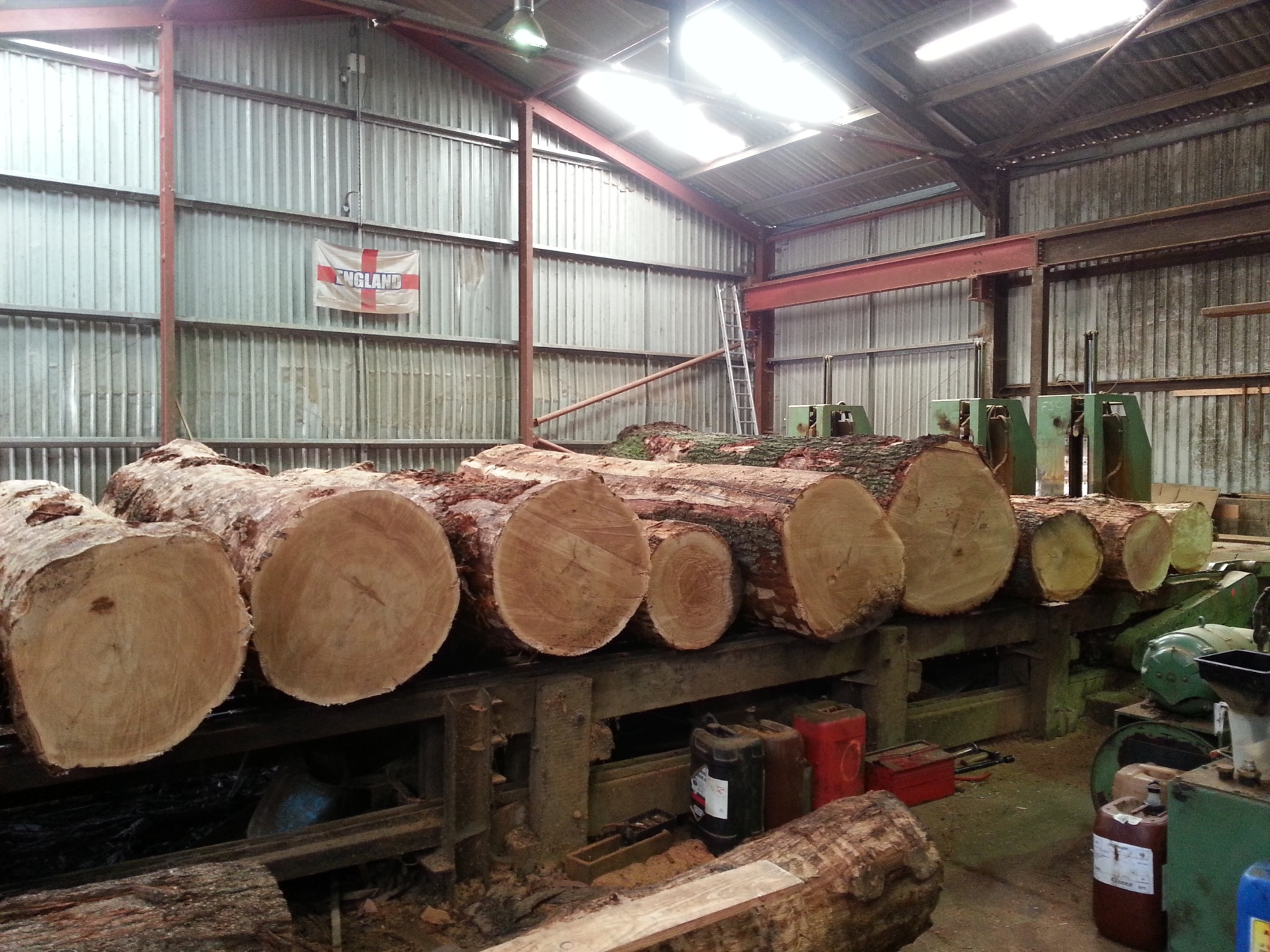

A word from the Project Lead